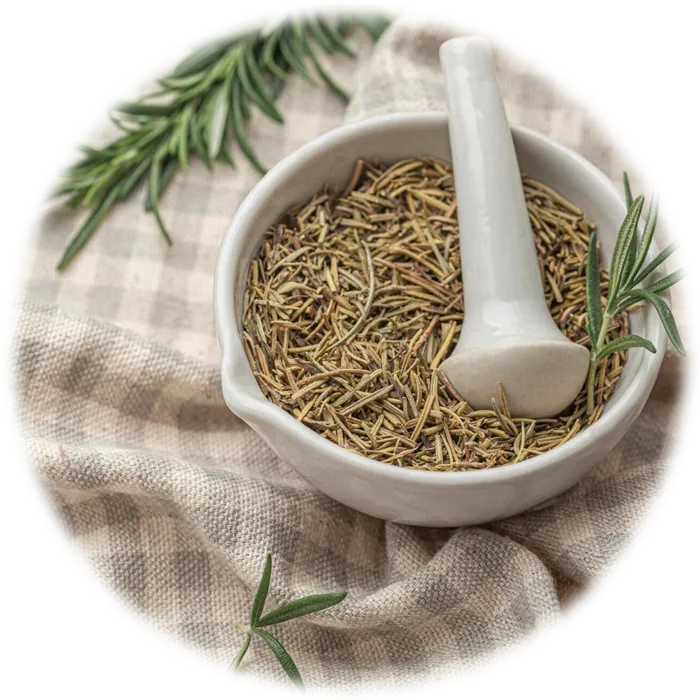
Nutritional properties of Tarragon
Energy :
310.00 Kcal / 100g
Category : Spices & Sauces
Group : Basic Spices & Condiments
Composition And Nutritional Value :
Tarragon is an aromatic herb known for its distinct, slightly sweet and anise-like flavor. It is rich in essential oils, particularly estragole, which contributes to its unique taste. Tarragon is a good source of vitamins, particularly vitamin A and vitamin C, as well as minerals like calcium, iron, and magnesium. It also contains antioxidants, which help fight oxidative stress and support overall health. Tarragon is low in calories and typically used in small amounts for flavoring dishes.
Health Benefits :
Tarragon is traditionally used for its digestive benefits, as it can help stimulate appetite, relieve indigestion, and reduce bloating. It also has mild antimicrobial and anti-inflammatory properties, which may help in reducing the risk of infections and inflammation. Some studies suggest that tarragon may support heart health by improving blood circulation and regulating cholesterol levels. Additionally, tarragon is thought to have mild sedative effects, helping to relieve stress and promote relaxation.
Culinary Uses :
Tarragon is commonly used in French cuisine and is a key ingredient in sauces such as béarnaise sauce. It pairs well with chicken, fish, eggs, and vegetables. Tarragon can be added to soups, stews, salad dressings, marinades, and as a garnish. It is also often used to flavor vinegar and oils. Its delicate, slightly sweet flavor makes it ideal for both savory and light, aromatic dishes. Tarragon is typically used fresh or dried, although fresh leaves are more commonly preferred for their full flavor.
Types :
The most common types of tarragon are French tarragon (Artemisia dracunculus var. sativa), which has a mild, sweet flavor and is commonly used in culinary applications, and Russian tarragon (Artemisia dracunculoides), which has a more bitter taste and is less aromatic. French tarragon is preferred for cooking due to its superior flavor, while Russian tarragon is often grown for ornamental purposes or as a less flavorful alternative.
Shopping And Storage Tips :
When buying tarragon, look for vibrant, fresh leaves with a fragrant, aromatic scent. Fresh tarragon should be stored in the refrigerator, either wrapped in a damp paper towel or placed in a water-filled jar with a plastic bag covering it. It can last for about a week when stored properly. Dried tarragon can also be used but has a more concentrated flavor. Store dried tarragon in an airtight container in a cool, dark place, where it can last for up to six months.

